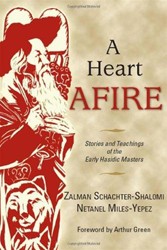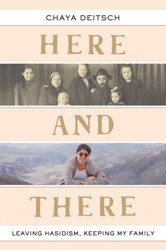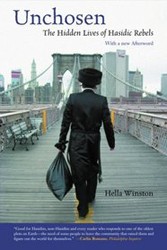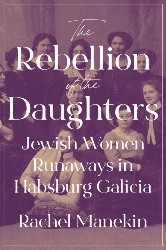In 1915 Palestine, musicologist Avraham Tzvi Idelsohn transcribed a melody he heard from Boyan Hasidim, a branch of pious Jews from the Ruzhin-Sadagora dynasty, who had come from the Ukraine to the Holy Land. Idelsohn paired lyrics with the tune, and the song caught fire among secular Zionists. By the 1930s it had spread to summer camps, schools, and countless hora dances. And thus, “Hava Nagila” became the quintessential Jewish melody (or as a 2018 Deadspin article notes, “the most cliched Jewish song of all time.”)
The origin of Judaism’s most internationally recognized song is but one of numerous gleanings from this exhaustive study of the history of Hasidism and its influence on wider Jewish culture. Over nearly 900 pages, David Biale and his international team of colleagues revise past scholarly conclusions on the history of the Hasidic movement. They document and analyze religious, economic, political, social, and technological factors that led to the birth and popularity of a branch of Judaism known for its emphasis on serving God through joy, the physical world, and prayer. (Though, as the authors demonstrate, it turns out finding common values and practices among different subsections of Hasidic Jews is harder than one might think.)
Aiming for both breadth and depth, the authors cover everything from pre-Baal Shem Tov hasidic interest in Kabbalah, post-Holocaust theology, and the use of visual culture to spread the Chabad ideology; to former Hasid Shulem Deen and his memoir All Who Go Do Not Return, the Satmar-run B&H Photo company, formerly Hasidic reggae artist Matisyahu, and various other historical curiosities — including a written description of Hasidic women by Leopold von Sacher-Masoch, who inspired the word “masochism.”
Readers willing to dive into this book’s sea of information will surely be rewarded, but those hoping to use the book as a reference may be challenged; the index is sparse and there are few footnotes, though there is an annotated bibliography. And while the authors document dozens of examples of Hasidic infighting — particularly over dynastic succession — and scathing critiques leveled by its practitioners towards non-members, the authors don’t seem as eager to convey the positive impact of Hasidism over its 250-year history. After all, as Arthur Green, the neo-Hasidic scholar and practitioner, writes in the book’s afterword: “The study of Hasidic sources … have provided spiritual nourishment for large numbers of Jewish seekers in quest after a religious teaching and way of life that may yet speak to them in an emerging postmodern era.”
Dr. Stu Halpern is Senior Advisor to the Provost of Yeshiva University. He has edited or coedited 17 books, including Torah and Western Thought: Intellectual Portraits of Orthodoxy and Modernity and Books of the People: Revisiting Classic Works of Jewish Thought, and has lectured in synagogues, Hillels and adult Jewish educational settings across the U.S.





